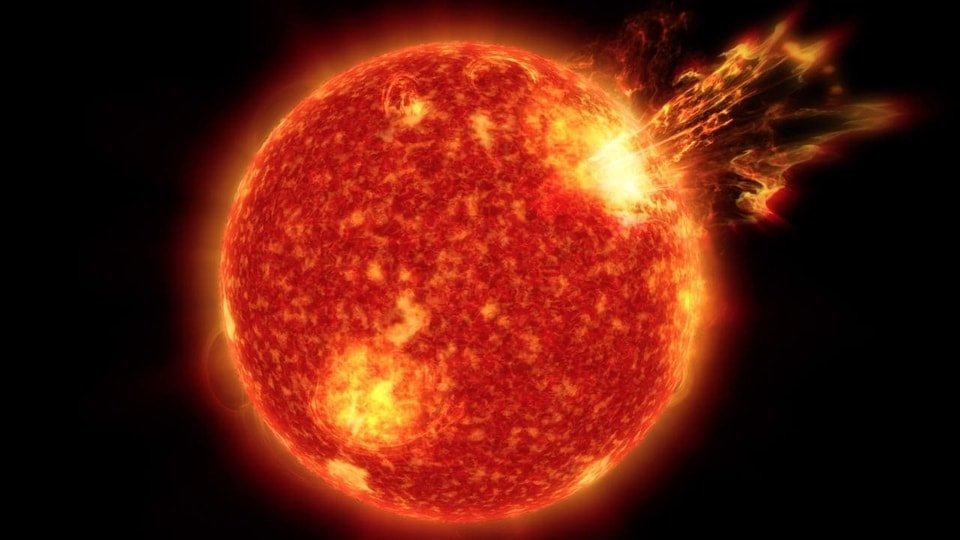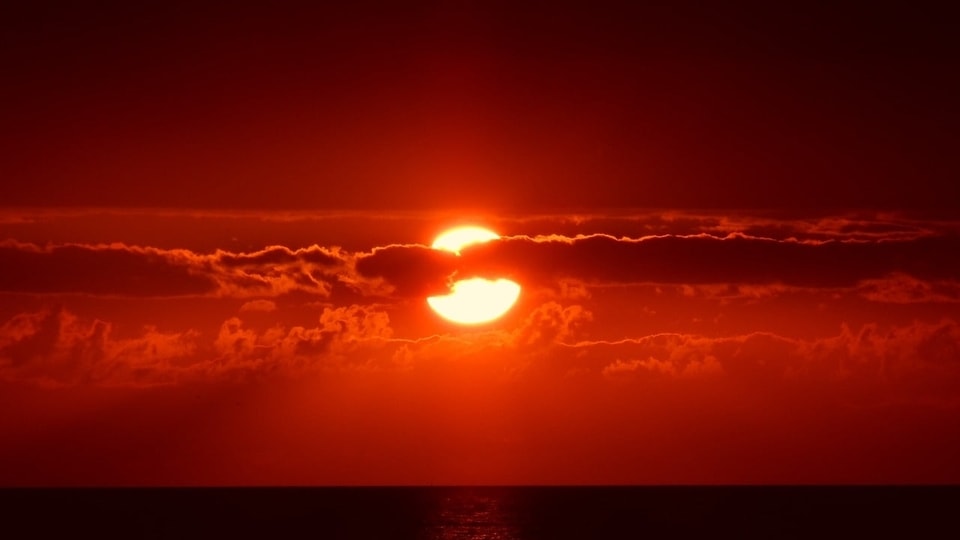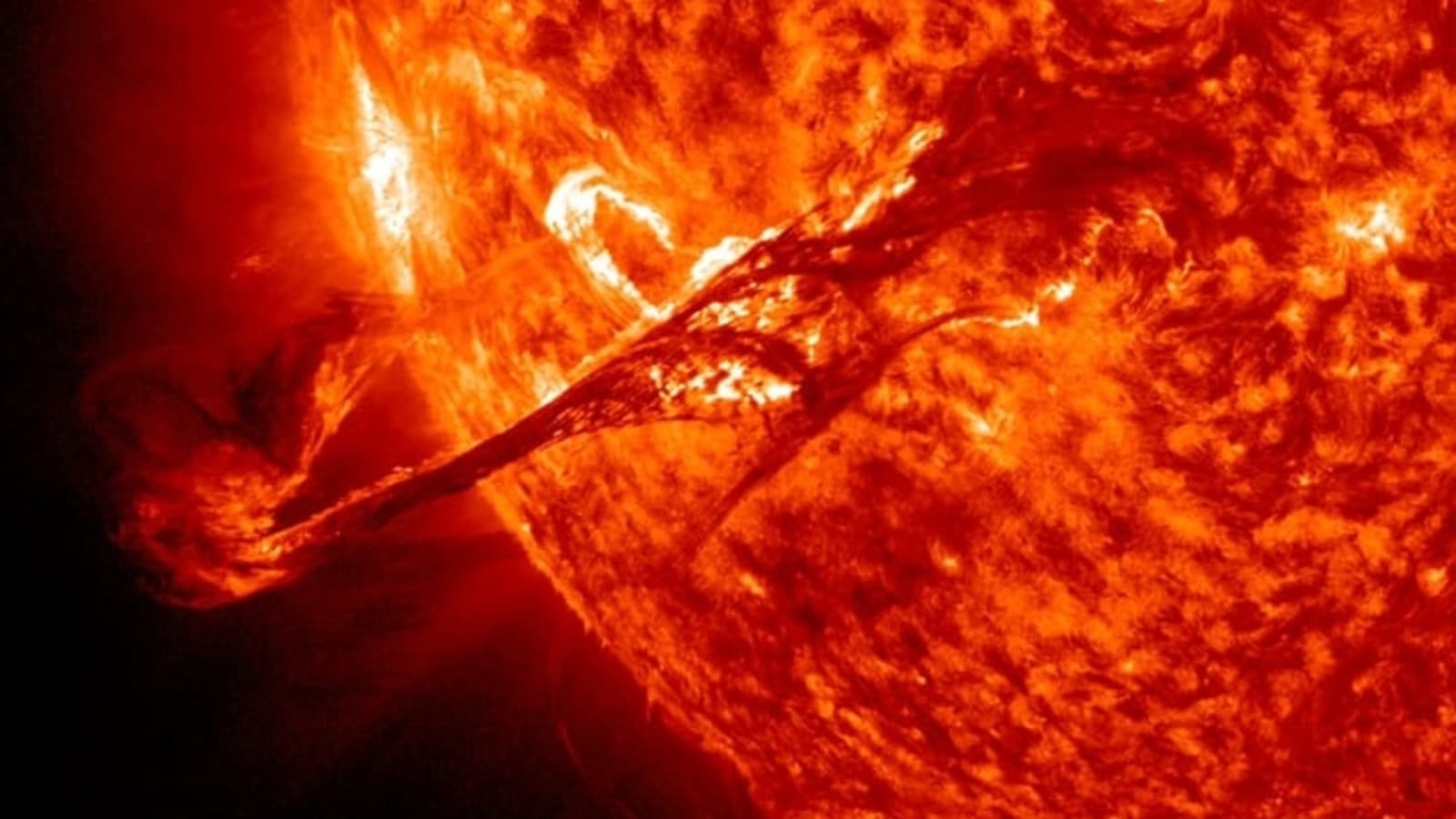Strong M-class solar flare sparks radio blackout over Australia, Southeast Asia
On February 6, sunspot AR3575 hurled out a dangerous M-class solar flare that caused blackouts in several regions including Australia and Southeast Asia.






 View all Images
View all ImagesSunspot AR3575 has been spewing out large amounts of solar material lately, with multiple coronal mass ejections and solar flares originating from this source. On February 6, this sunspot hurled out a dangerous M-class solar flare that caused blackouts in several regions around the world. Solar activity has been on a dangerous rise in the last few months, and it is expected to increase as we approach solar maximum. Know all about the strong M-class solar flare that impacted Earth in the last few days.
M-class solar flare
In an X post, Space Weather Physicist Dr. Tamitha Skov wrote, “As if on cue, Region 3575 fires an M4.2-flare with a high R1-level #RadioBlackout and launches a gorgeous #solarstorm. Likely this storm is not Earth-directed, but it sure makes for some pretty fireworks.”
NASA Solar Dynamics Observatory revealed that the solar flare took just 8 minutes to reach Earth while travelling at the speed of light. It was reported to be an M4-class solar flare and had an intensity of M4.2. A SpaceWeather report revealed that the shortwave radio blackout occurred due to extreme ultraviolet radiation from the flare which ionized the top of Earth's atmosphere. It caused radio blackouts across Australia and Southeast Asia, and communication blackout was observed at frequencies below 30MHz even an hour after the solar flare peaked.
When charged solar particles hit Earth, the radio communications and the power grid are affected when they hit the planet's magnetic field. It can cause power and radio blackouts for several hours or even days. However, electricity grid problems occur only if the solar flare is extremely large.
Are M-class solar flares dangerous?
According to NASA, M-class solar flares are moderate in intensity and have the potential to cause brief radio blackouts. This is because when solar particles hit Earth, the radio communications and the power grid are affected when they hit the planet's magnetic field.
Also, read these top stories today:
More Than Just Chip Power! Nvidia and Cisco are teaming up to make it easier for corporations to build their own AI computing infrastructure. Cisco will offer Nvidia-based equipment along with its networking gear. Find out more here.
Bluesky Social Goes Public! After a year of staying in the invite-only phase, former Twitter CEO Jack Dorsey's decentralized social media platform Bluesky Social has opened for the public. Dive in here.
Apple Defeats AliveCor Suit! A US District Judge has ruled that the iPhone maker won't have to face a lawsuit alleging its watch copied heart-monitoring technology from a Khosla Ventures LLC-backed startup, AliveCor. Read all about it here.
One more thing! We are now on WhatsApp Channels! Follow us there so you never miss any updates from the world of technology. To follow the HT Tech channel on WhatsApp, click here to join now!
Catch all the Latest Tech News, Mobile News, Laptop News, Gaming news, Wearables News , How To News, also keep up with us on Whatsapp channel,Twitter, Facebook, Google News, and Instagram. For our latest videos, subscribe to our YouTube channel.





























